These are the weapons that make up Isis's arsenal
One of the reasons the terror group has been able to keep up its offensive operations is that has lot of military equipment
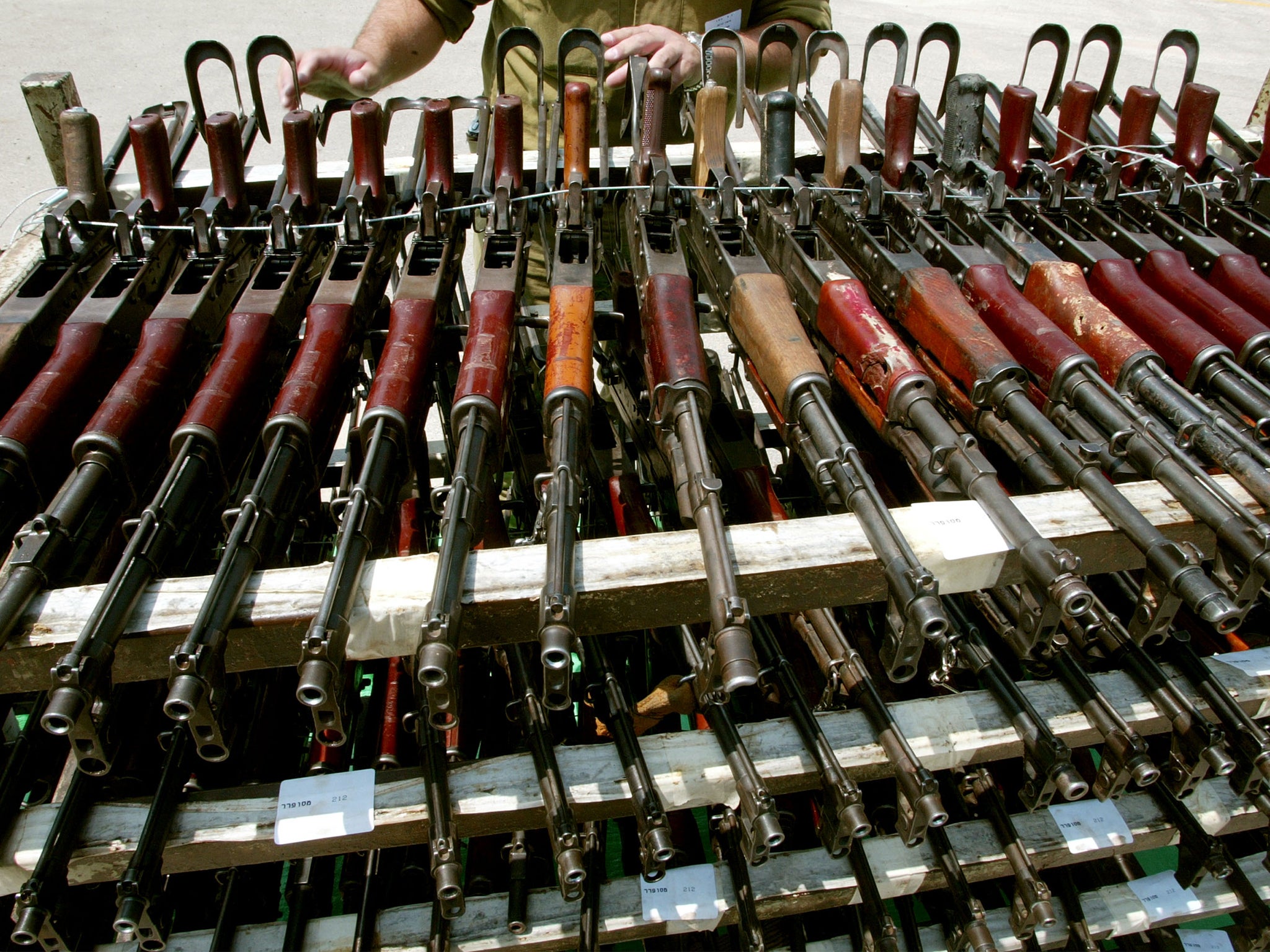
Your support helps us to tell the story
From reproductive rights to climate change to Big Tech, The Independent is on the ground when the story is developing. Whether it's investigating the financials of Elon Musk's pro-Trump PAC or producing our latest documentary, 'The A Word', which shines a light on the American women fighting for reproductive rights, we know how important it is to parse out the facts from the messaging.
At such a critical moment in US history, we need reporters on the ground. Your donation allows us to keep sending journalists to speak to both sides of the story.
The Independent is trusted by Americans across the entire political spectrum. And unlike many other quality news outlets, we choose not to lock Americans out of our reporting and analysis with paywalls. We believe quality journalism should be available to everyone, paid for by those who can afford it.
Your support makes all the difference.Isis has been losing some territory recently, but the Islamist group is carrying out more attacks than ever before.
One of the reasons that Isis has been able to keep up its offensive operations is that has lot and lots of military equipment, much of it captured from the Iraqi.
That's why Isis has so much weaponry that originated in the US — the US gave loads of military hardware to the Iraqi army and Isis took lots of it from them during a series of military victories.
Here are just a few of the weapons in Isis's arsenal:
T-55 Tanks
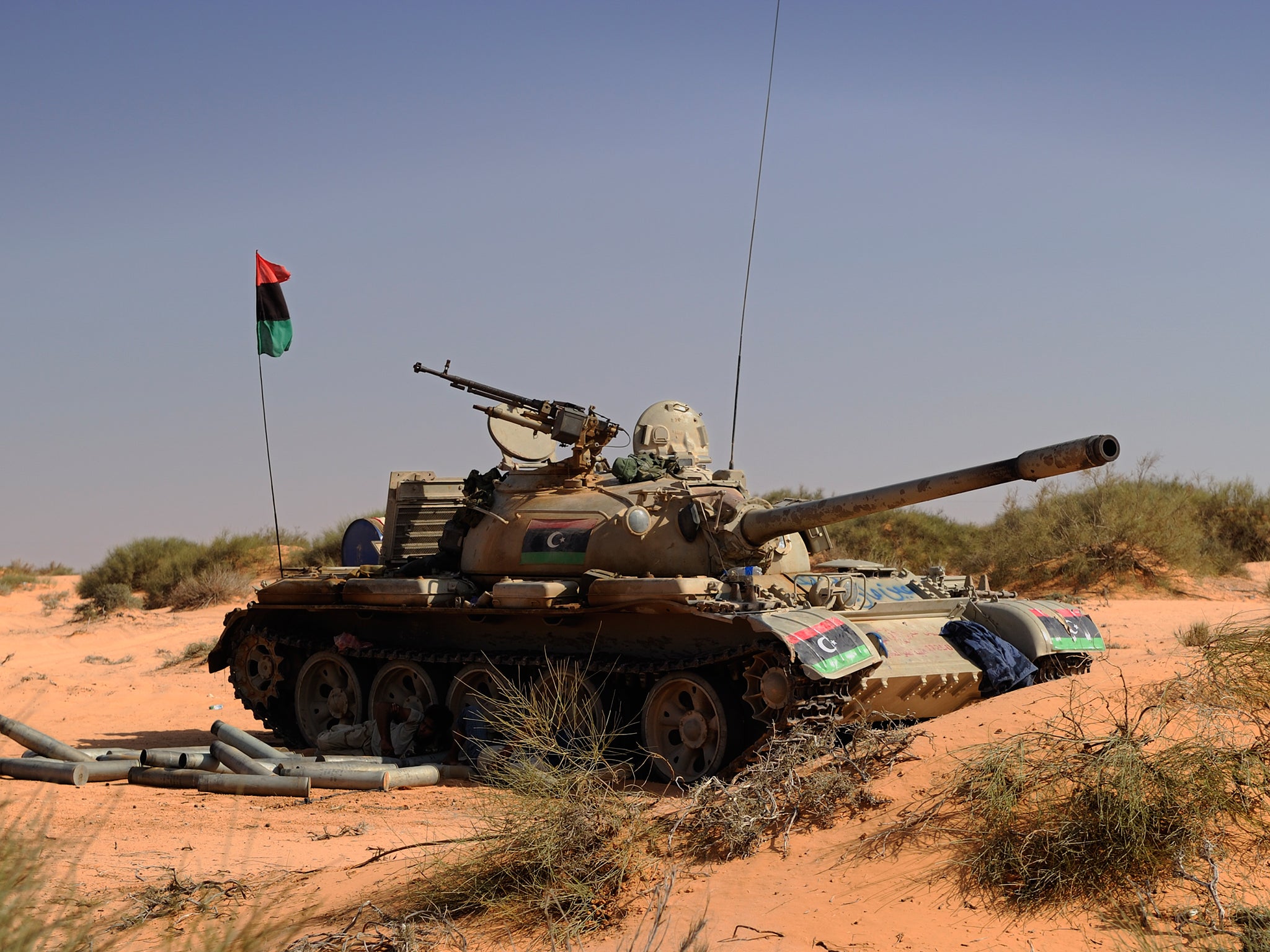
It is estimated that Isis has about 30 T-55 tanks, although it is unknown how well the organization can maintain and operate them. The T-55 tank series is a Soviet tank line that was produced from the end of World War II through the 1980s.
Despite the tanks' age, they remain operational in up to 50 armies around the world. The tanks feature heavy armor, along with a 100-mm rifled gun and a secondary 7.62-mm machine gun.
T-62 Tanks
Isis has an estimated 15 T-62 model tanks. The T-62 was the main Soviet battle tank that was developed to replace the T-55. This tank was used extensively by the Iraqis to considerable success during the Iran-Iraq war.
The T-62 is heavily armored, and is armed with a 115-mm tank gun along with two secondary machine guns.
T-72 Ural Tanks
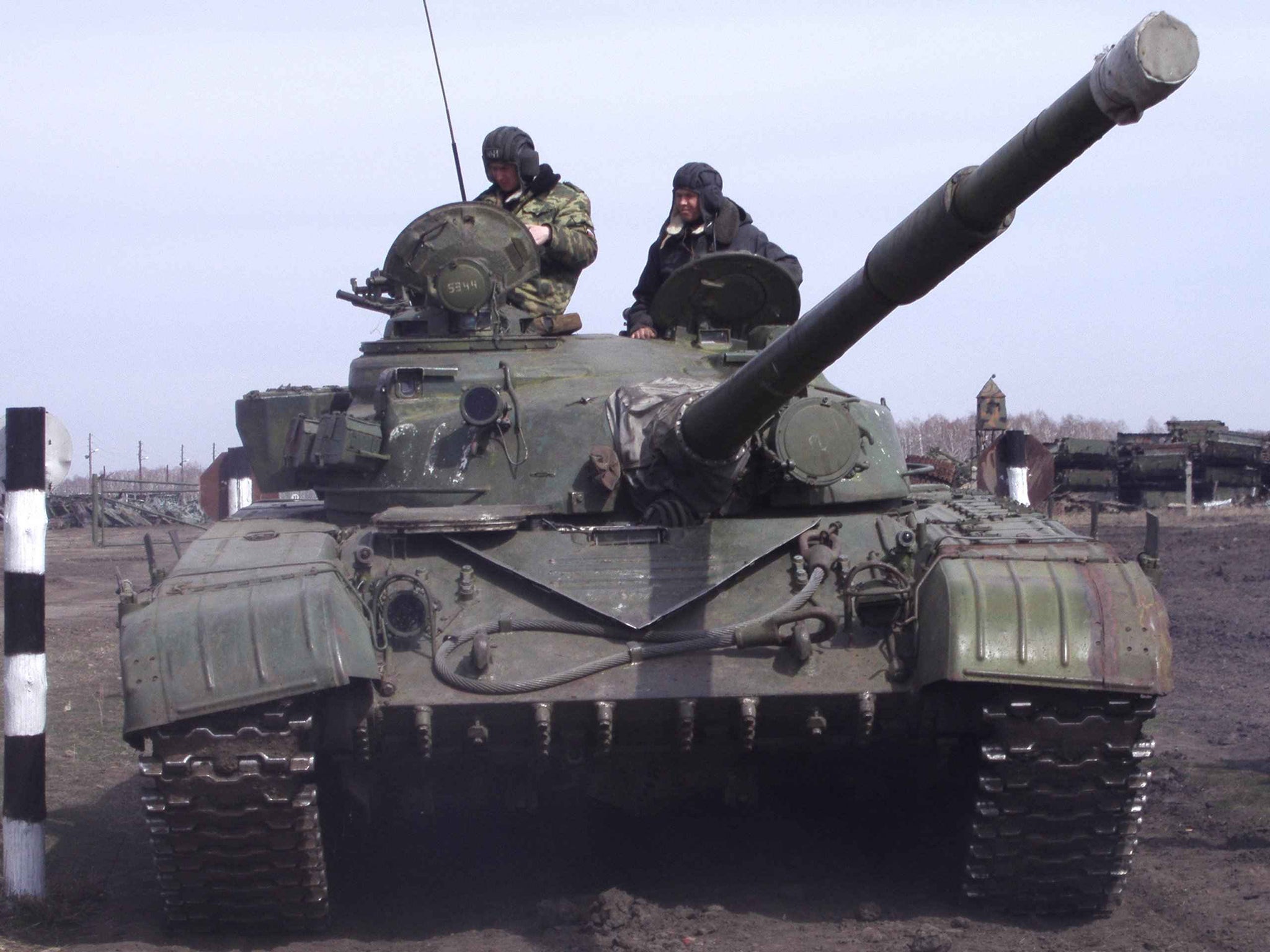
The militants have an estimated five to 10 T-72 tanks, although it is unknown whether they will be able to keep the vehicles in working order. The T-72 tank is the second-generation Soviet battle tank. These tanks first entered production in 1971, and they are still rolling off the assembly line.
The T-72 is heavily armored and features a 125-mm main gun. It is also armed with a secondary machine gun and an antiaircraft gun.
BRDM-2 Armored Vehicles
The jihadists have captured an estimated six of these armored vehicles. The BRDM-2 is an amphibious armored patrol car that was first created by the Soviet Union in the 1960s.
The BRDM-2 is operated by a crew of four. The vehicle has a 14.5-mm heavy machine gun as its main armament, along with a 7.62-mm secondary general-purpose machine gun.
MT-LB Armored Vehicles
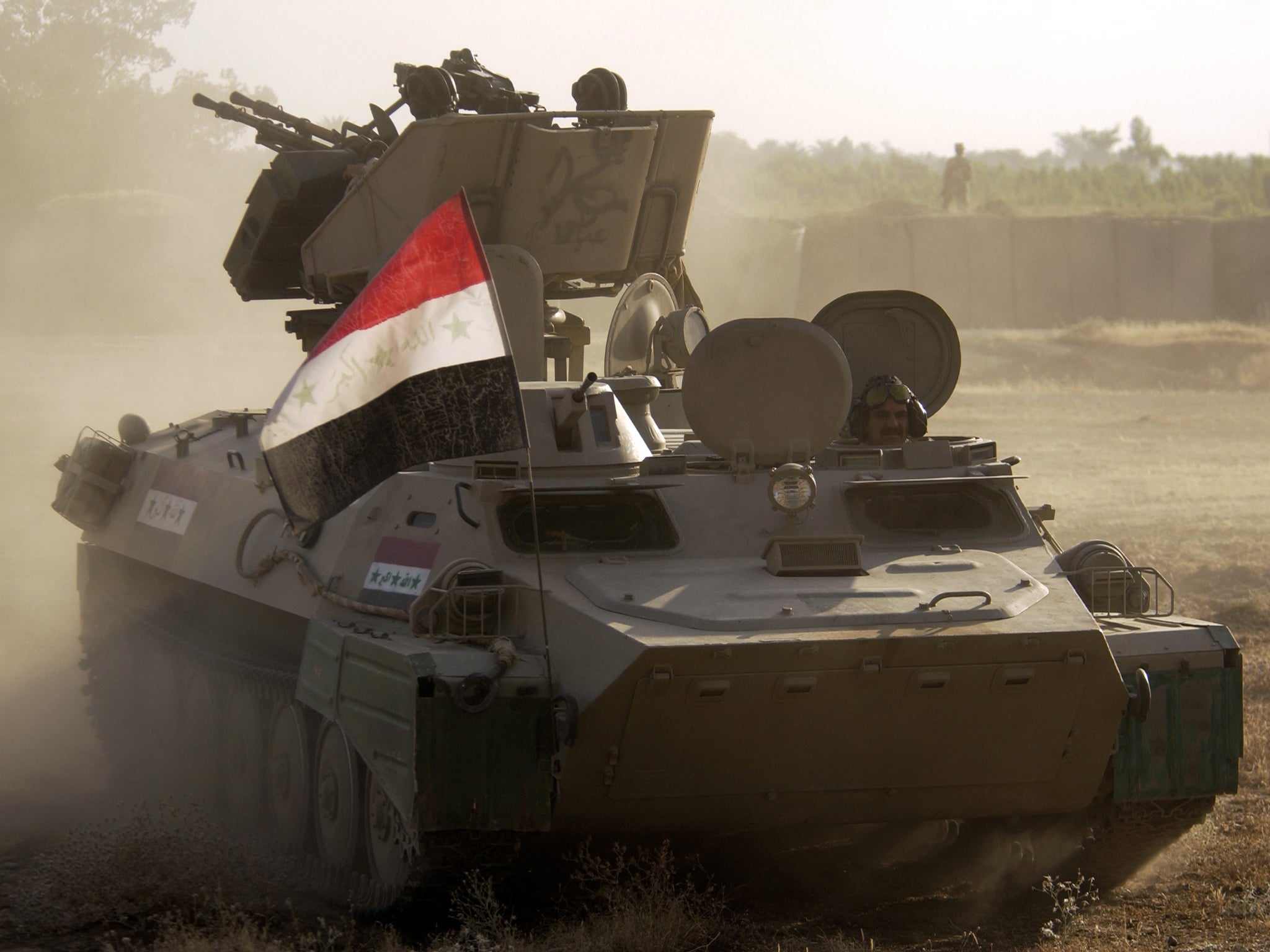
Isis is believed to have two BRDM-2s, both of which were captured in Iraq. Like the BRDM-2, the MT-LB is a Soviet amphibious auxiliary armored vehicle. The vehicle was first introduced in the late 1960s and is still operated today. In 2012, the Iraqi Army struck a deal with Bulgaria for the procurement of 500 MT-LBs.
The MT-LB can fit 13 people. Its main armament is a 7.62-mm machine gun.
BMP-1 Infantry Fighting Vehicles
Isis is believed to have 20 such infantry fighting vehicles in its arsenal. The BMP-1 is a Soviet amphibious tracked infantry fighting vehicle. Introduced into service in the late 1960s, the vehicle was first used in combat during the Yom Kippur War by Egypt and Syria against Israel.
The BMP-1 can fit eight passengers along with three crew members. It has a 73-mm semiautomatic gun along with a 7.62-mm secondary machine gun.
Humvees
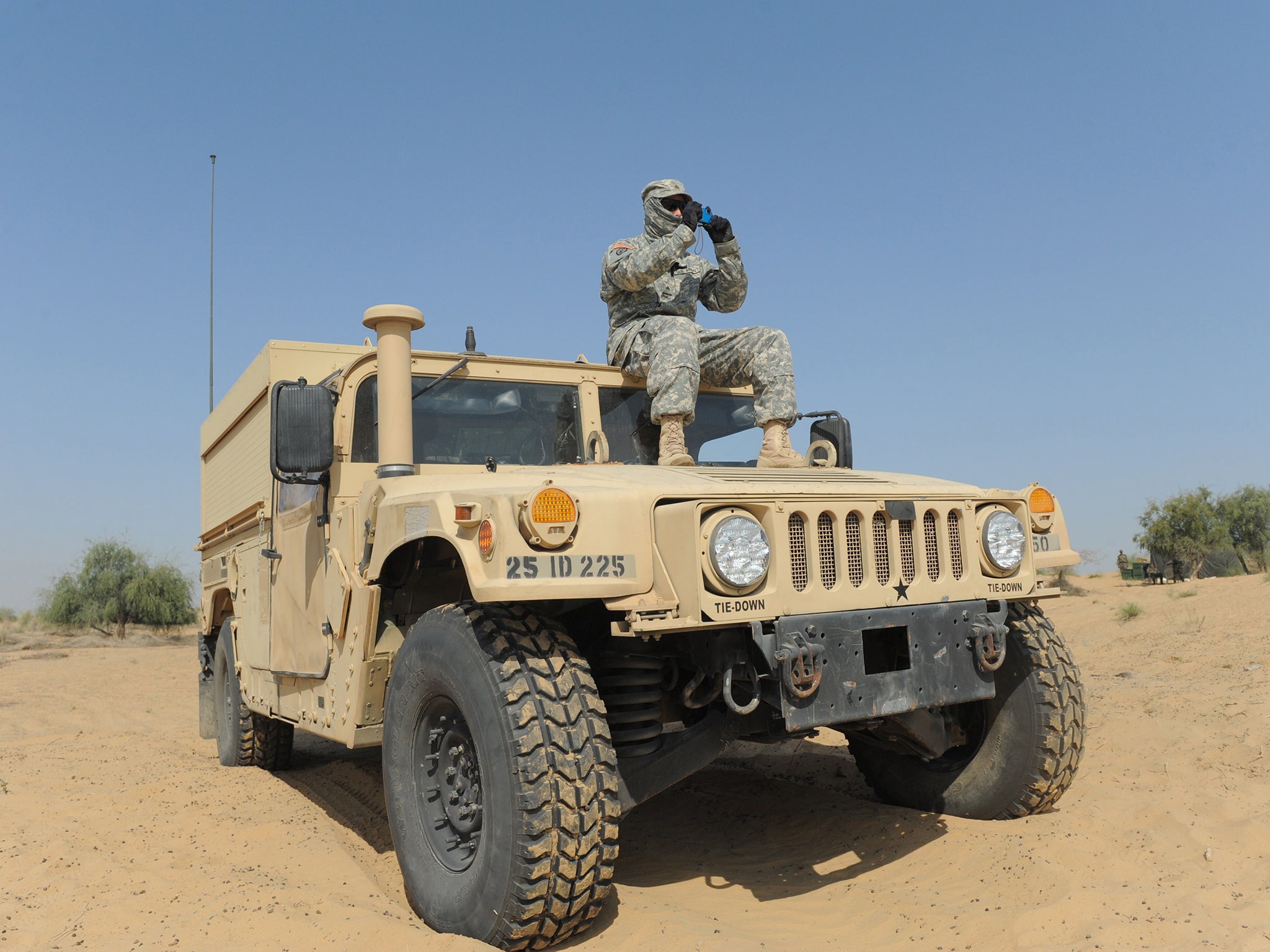
Isis acquired a fleet of US-built Humvees when it stormed Mosul. The US had provided these same Humvees to the Iraqi Army. The vehicles allow for quick and effective movement across rough terrain.
The Humvee's heavy armor also protects forces against small-arms fire as well as against collateral damage from indirect explosions. The vehicles offer little protection against land mines or buried IEDs.
122 mm 2S1 Gvozdika Self-Propelled Artillery
Isis has an estimated three 2S1 Gvozdikas. First introduced into service in the early 1970s, the Gvozdika is a Soviet piece of self-propelled artillery. This makes the Gvozdika a highly maneuverable, and amphibious, piece of artillery that Isis can bring to the front easily.
The Gvozdika fires 122 mm shells at a semiautomatic pace. It has a conventional range of 9.5 miles.
AK-47s
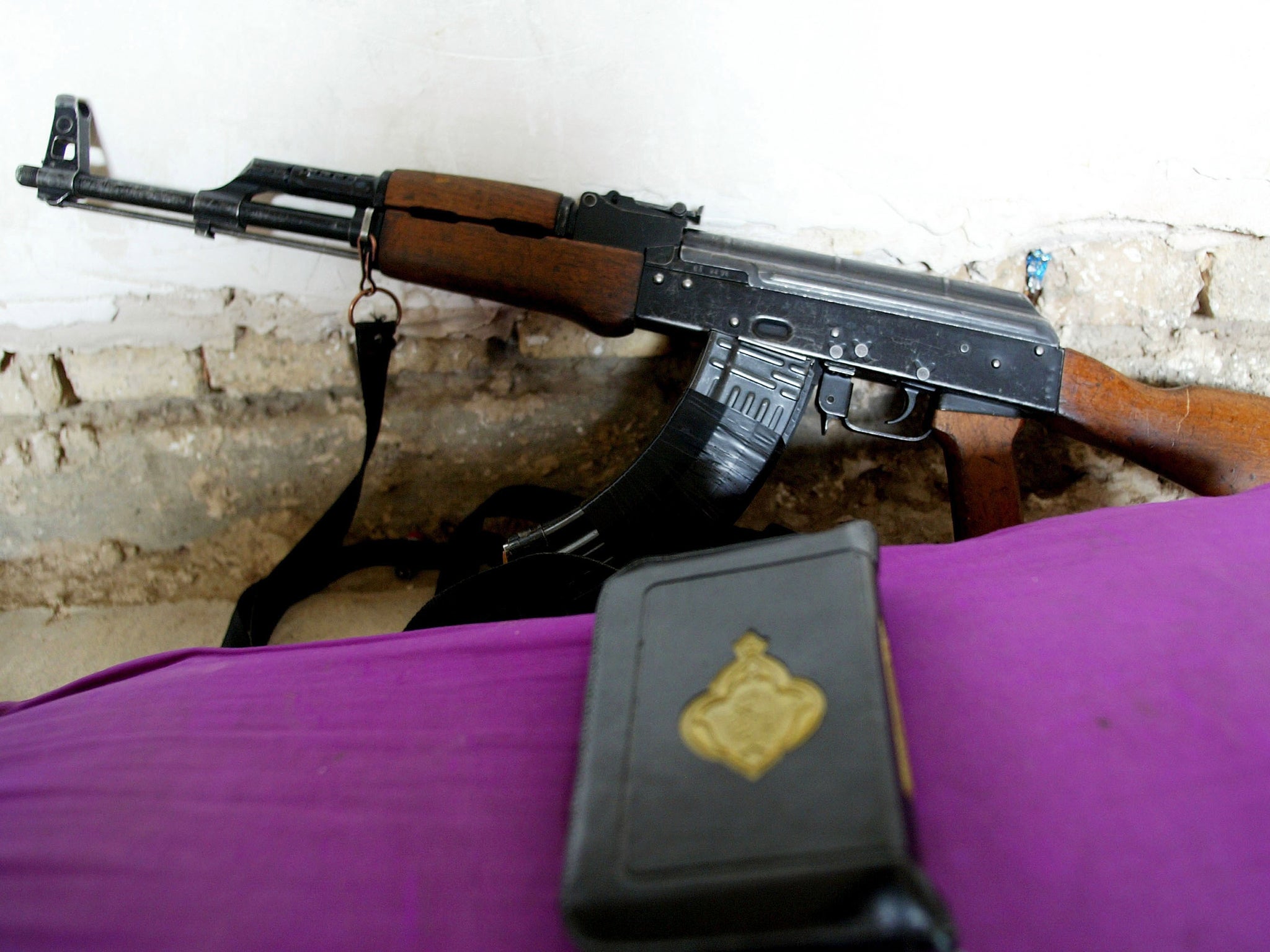
Although Isis does not have a weapon of choice, the AK-47 has become the group's standard assault rifle because of its low cost, durability, availability, and ease of use.
The AK-47 was originally developed by the Soviets but quickly spread to other armies and irregular forces around the world. AK-47s are lightweight, fairly effective, and remarkably easy to obtain.
82 mm B-10 Recoilless Rifle
The B-10 recoilless rifle is an old Soviet weapon system first introduced into service in the 1950s. Although the weapon is now considered obsolete, it was used by a wide range of countries during the Cold War, including Syria and Iraq.
Isis likely stole the B-10 from various military bases in regions now under its control in both Iraq and Syria. The recoilless rifle fires modified artillery shells that function well against tanks and other varieties of armored vehicles.
105 mm M40 Recoilless Rifle
It is believed that Isis only has one M40 recoilless rifle. The M40 recoilless rifle is a lightweight antitank weapon that was made by the US. The weapon entered into service in the mid-1950s, and it quickly became used throughout the world.
Although Syria and Iraq never purchased the weapons, the weapons fell into the hands of various rebel forces in Syria before ultimately being captured by Isis forces.
M198 Howitzer
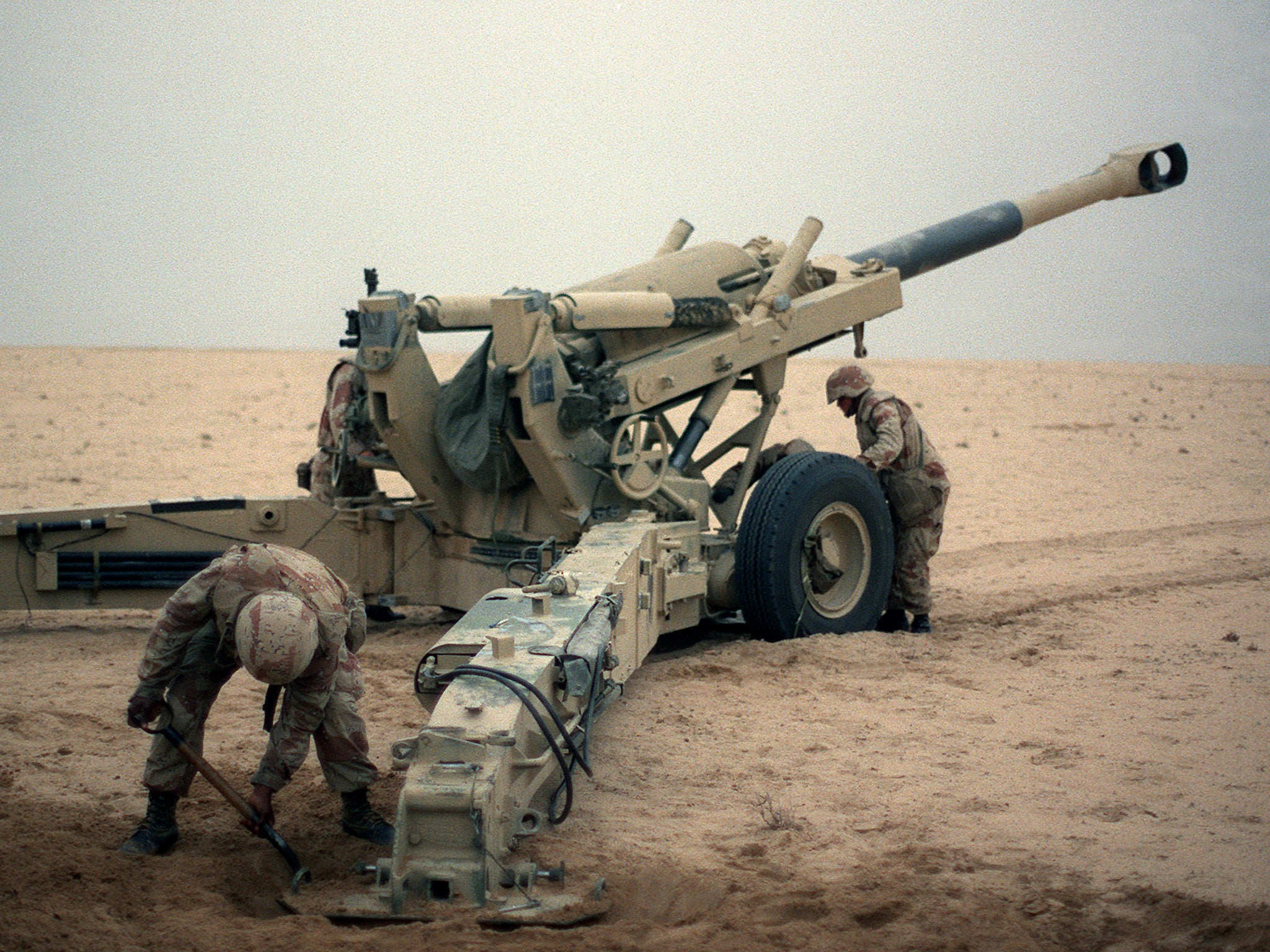
The M198 howitzer is a medium-size artillery piece that must be towed between locations. It was developed for service within the US Army after World War II.
The M198 can fire rounds upward of 14 miles. This howitzer can launch a variety of munitions, including high explosives, rocket-assisted projectiles, and white phosphorus. Isis most likely captured howitzers from Iraqi Army troops after they fled their bases.
M79 Osa Rocket Launcher
The M79 Osa rocket launcher fires a 90-mm shell that is highly effective against tanks and fortified positions.
Investigative journalist Elliot Higgins (perhaps better known as Brown Moses) believes that these weapons originated in Croatia before being smuggled to Syrian rebels by Saudi Arabia. Isis has used these rockets to devastating effect against the Iraqi Security Forces' armored vehicles.
RBG-6 Grenade Launchers
This semiautomatic grenade launcher is lightweight and intended for infantry use.
Saudi Arabia smuggled Croatian RBG-6 launchers into Syria, according to Brown Moses. The grenade launchers eventually found their way into Isis' hands and are now being used in Iraq as well.
RPG-7s
Iraq is awash with RPG-7s, with the Iraqi Security Forces, the Kurdish peshmerga, and Isis all using rocket-propelled grenades.
RPG-7s are highly portable unguided shoulder-launched antitank weapons. These systems are durable and relatively low cost. They're also fairly simple to use.
The grenades can reach distances of up to 920 meters, although at greater range the projectile may self-destruct without hitting a target.
Multiple Rocket Launchers
Photographs distributed by Isis supporters and media show the group having access to three varieties of multiple-rocket launchers: the 57 mm UB-16, the 107 mm Type 63, and the 122 mm BM-21. These systems can fire multiple rockets a second at a range of approximately 13 miles.
Both Iraq and Syria fielded these varieties of multiple-rocket launchers, giving Isis multiple opportunities to seize the weapon systems from a number of conquered military bases.
Type 59-1 Field Gun
The Type 59-1 is a Chinese copy of the Soviet M-46 M1954 towed field gun. The M-46 was first produced by the Soviets in 1954. At one point, the M-46 had the longest range of any artillery system in the world with a 17-mile maximum firing range.
The Type 59-1 is a licensed Chinese copy of the significantly lighter M-46. Both the Syrian and Iraqi militaries made use of the Type 59-1 field gun, providing numerous source points from which Isis might have acquired this weapon.
D-30 Howitzer
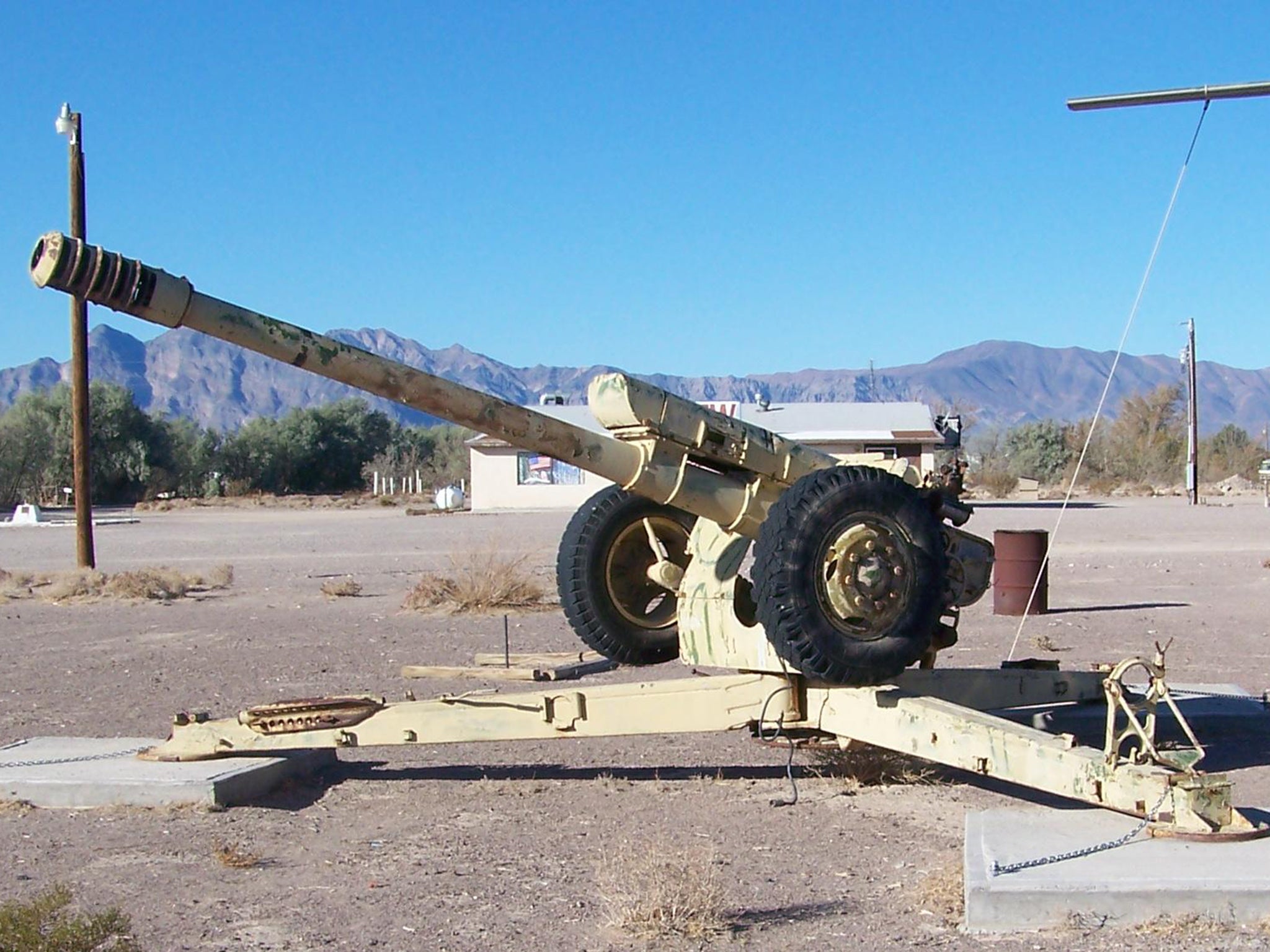
The D-30 Howitzer is Soviet artillery piece that was first created in the 1960s. The D-30 must be towed between locations, and the barrel of the D-30 is used in the 2S1 Gvozdika self-propelled artillery (which Isis also has).
The weapon can fire a sustained five to six rounds per minute at an effective firing range of approximately 10 miles.
Antiaircraft Guns
The ZU-23-2 is a Soviet antiaircraft autocannon that was produced from 1960 to the present day. This autocannon fires 23-mm rounds at a rate of 400 rounds per minute.
The ZU-23-2 can fire effectively at up to two miles, and it is designed to strike at low-flying targets as well as armored vehicles. This weapon has been used heavily so far in the Syrian Civil War, and it is also in the arsenal of the Iraqi Army.
Isis has also captured small numbers of 14.5 mm KPV, 14.5 mm ZPU2, 23 mm ZU-23, 37 mm Type 65, and 57 mm AZP S-60 antiaircraft guns from the Syrian and Iraqi militaries.
23 mm ZSU-23-4 Self-Propelled Antiaircraft Guns
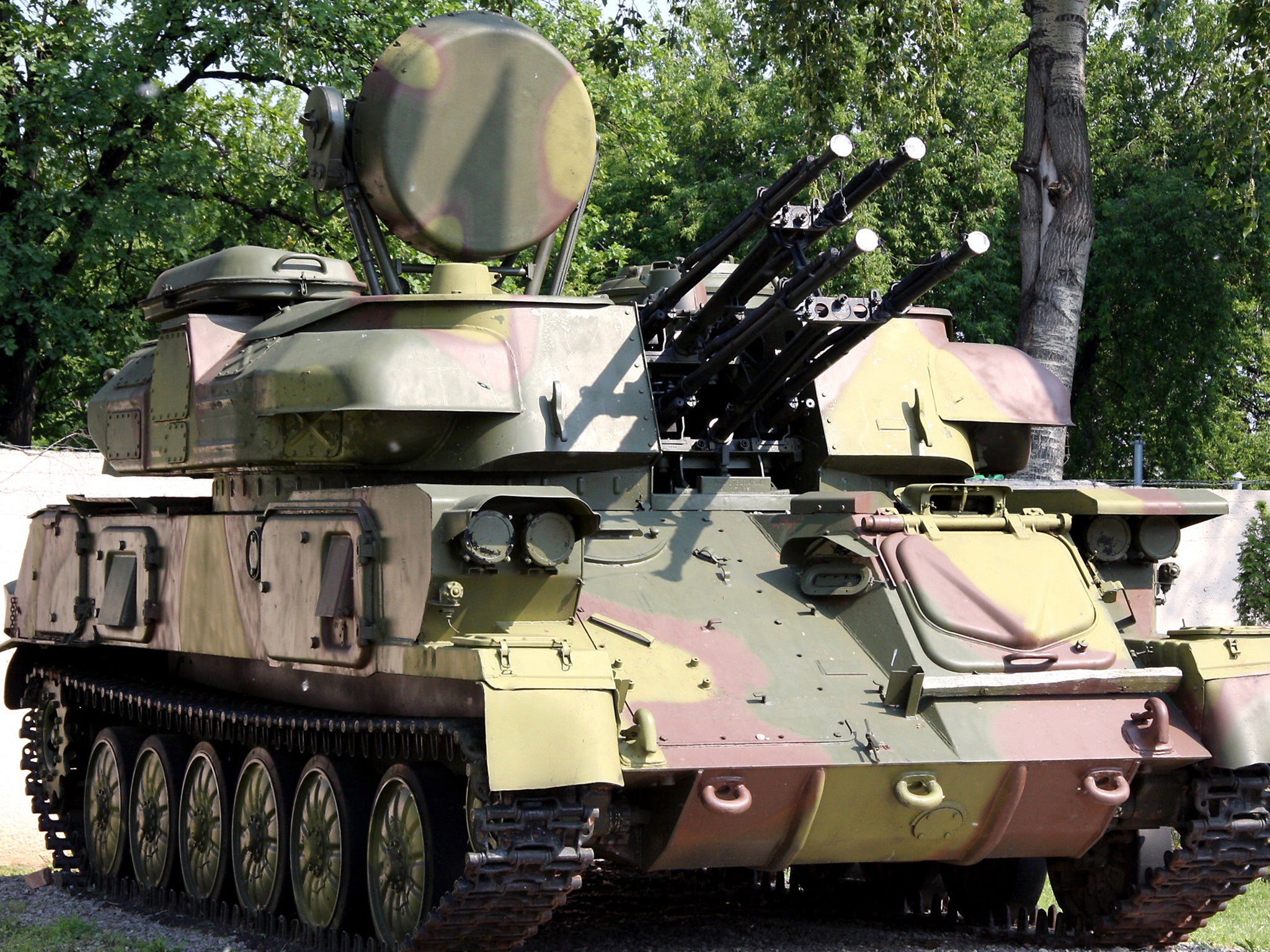
Isis has at least two ZSU-23-4s in its arsenal. The ZSU-23-4 is a lightly armored antiaircraft system. The weapon is radar-guided and self-propelled, allowing for it to be easily transported between locations. Although the ZSU was only produced into the 1980s, it continues to be used in various countries that had arms agreements with the Soviet Union.
Isis likely captured the ZSUs in their inventory from the Syrian military.
FIM-92 Stinger MANPADS
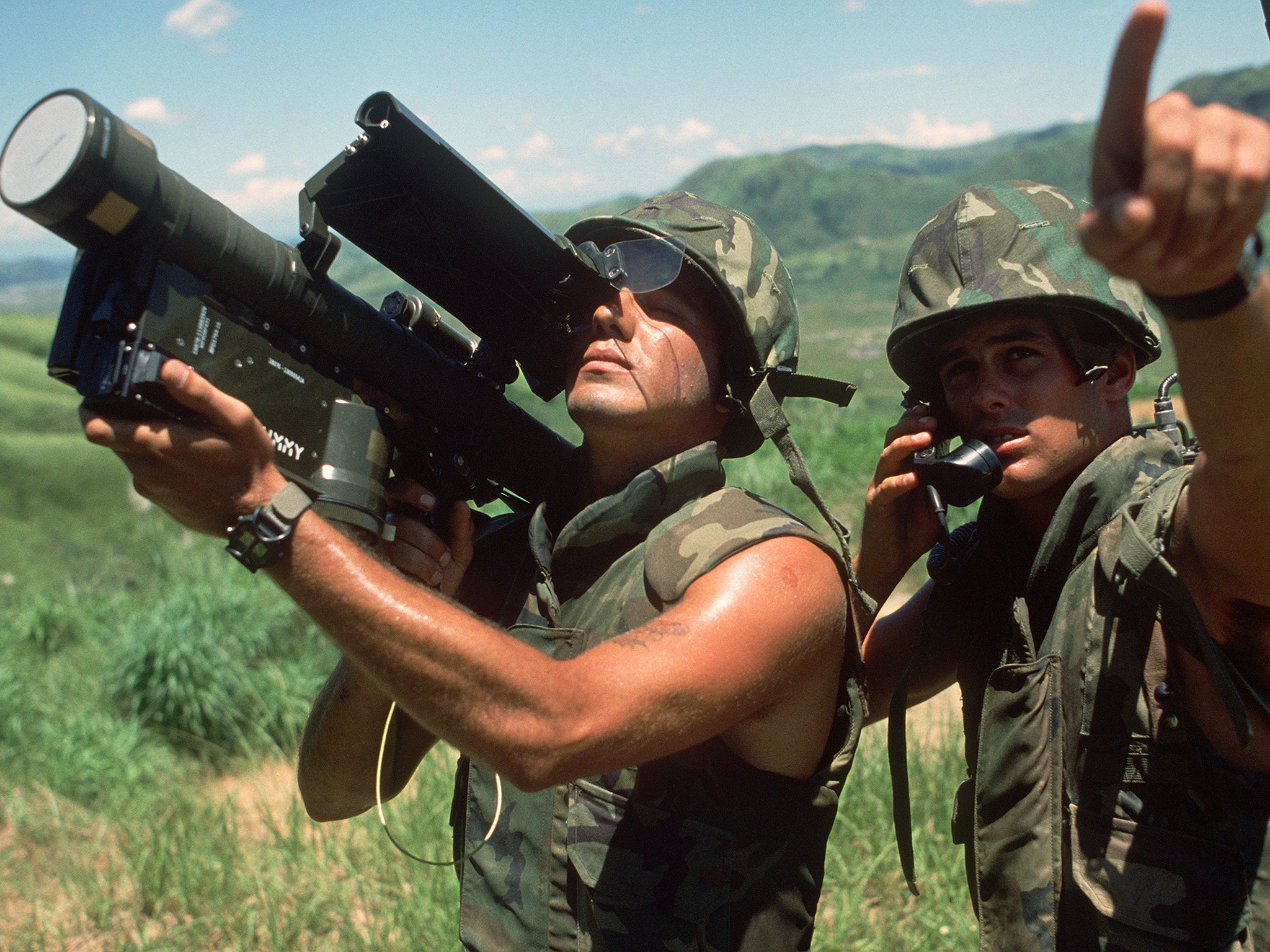
The FIM-92 Stinger is a shoulder-fired infrared homing surface-to-air missile. It was originally designed by the US, and it entered service in 1981. These MANPADs are extremely dangerous and can effectively take down helicopters and aircraft.
FIM-92 Stingers require specialized maintenance and care. It is believed Isis looted FIM-92s from Iraqi military bases.
SA-16 MANPADS
On August 24, 2014, Isis reportedly plundered several Russian-made SA-16 antiaircraft-missile systems from the Taqaba airbase in eastern Syria, payoff from a battle in which more than 500 people were killed.
A version of the SA-16 entered service in the Soviet military in the early 1980s and is currently part of the Russian army's arsenal. They can hit aircraft at up to 16,000 feet and could endanger helicopters and low-flying fighter jets used in the air campaign against Isis.
9K32 Strela-2 MANPADS
The Strela-2 is the first generation of Soviet shoulder-fired surface-to-air missile systems. First introduced in the late 1960s, the Strela-2 continues to be used in conflicts around the world in places where the Soviets once sold weapons.
Both Iraq and Syria were operators of the Strela-2. As such, Isis could have seized the weapon from either military during its conquest of enemy military bases.
DShK 1938 Machine Gun
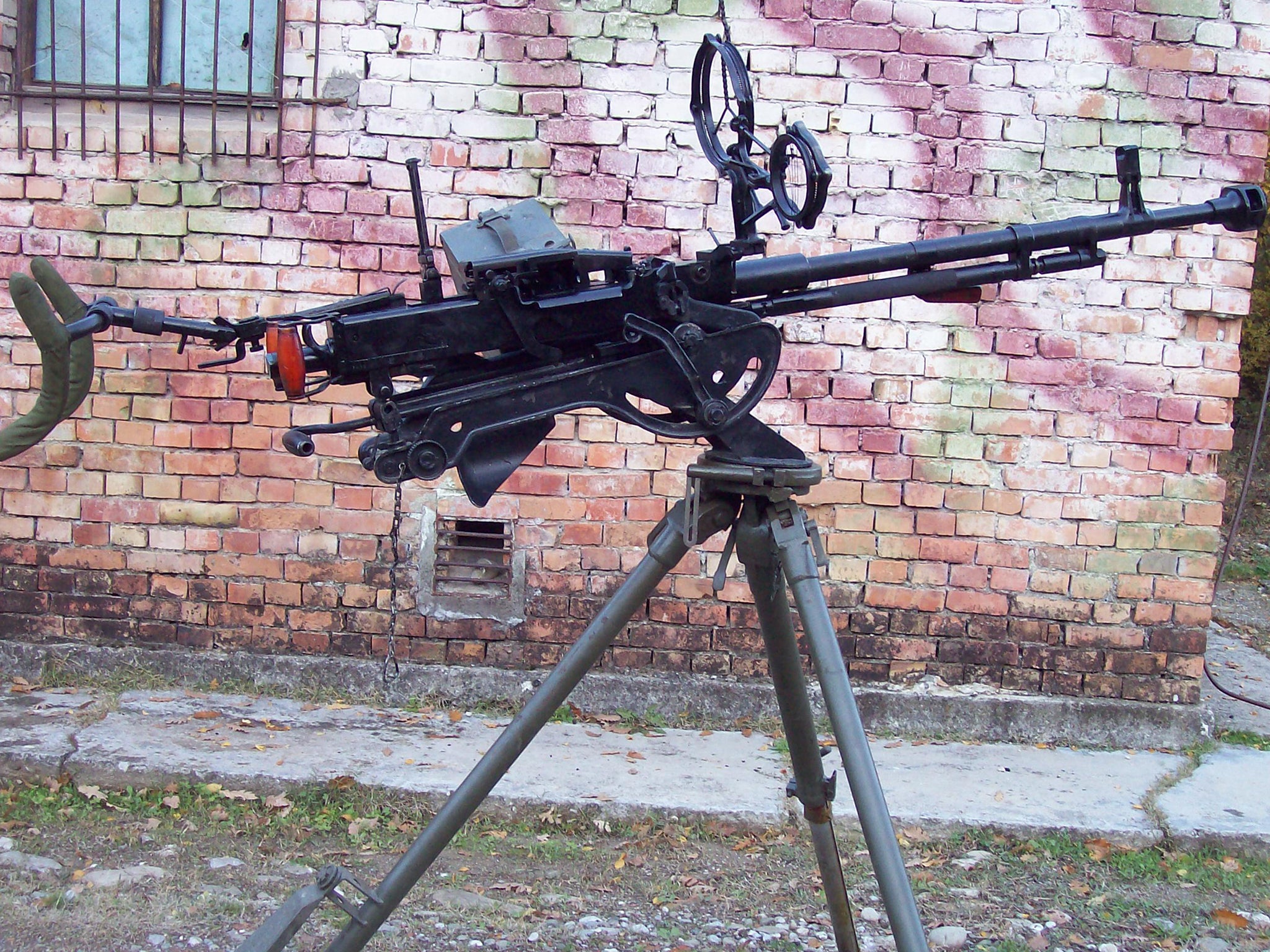
The DShK 1938 is a Soviet heavy machine gun dating from 1938. It became the standard heavy machine gun of the Soviet Union during World War II, and it is still in production around the world.
The DShK has several uses, including as an antiaircraft weapon and heavy infantry support weapon. It can fire 600 rounds per minute. The weapon can be mounted on cars for easy use and maneuverability. Isis most likely stole these machine guns from either the Syrian or Iraqi armies.
Antitank Missiles
The HJ-8 is an antitank missile that has been manufactured by China since the late 1980s. HJ-8s have an operational range of up to 6,000 meters, and the system is partially based on the US BGM-71 TOW missile.
HJ-8s are highly effective against armor, bunkers, and fortifications. The Free Syrian Army has been using these missiles to great success against the Syrian Arab Army since June 2013, although now Isis has managed to incorporate these weapons into its arsenal.
Isis has also acquired 9M14m Malyutka-M, 9M111M Faktoriya, 9M113 Konkurs, 9K115-3 Metis-M, 9M133 Kornet, and I-RAAD antitank missiles for its inventory.
MiG fighter jets
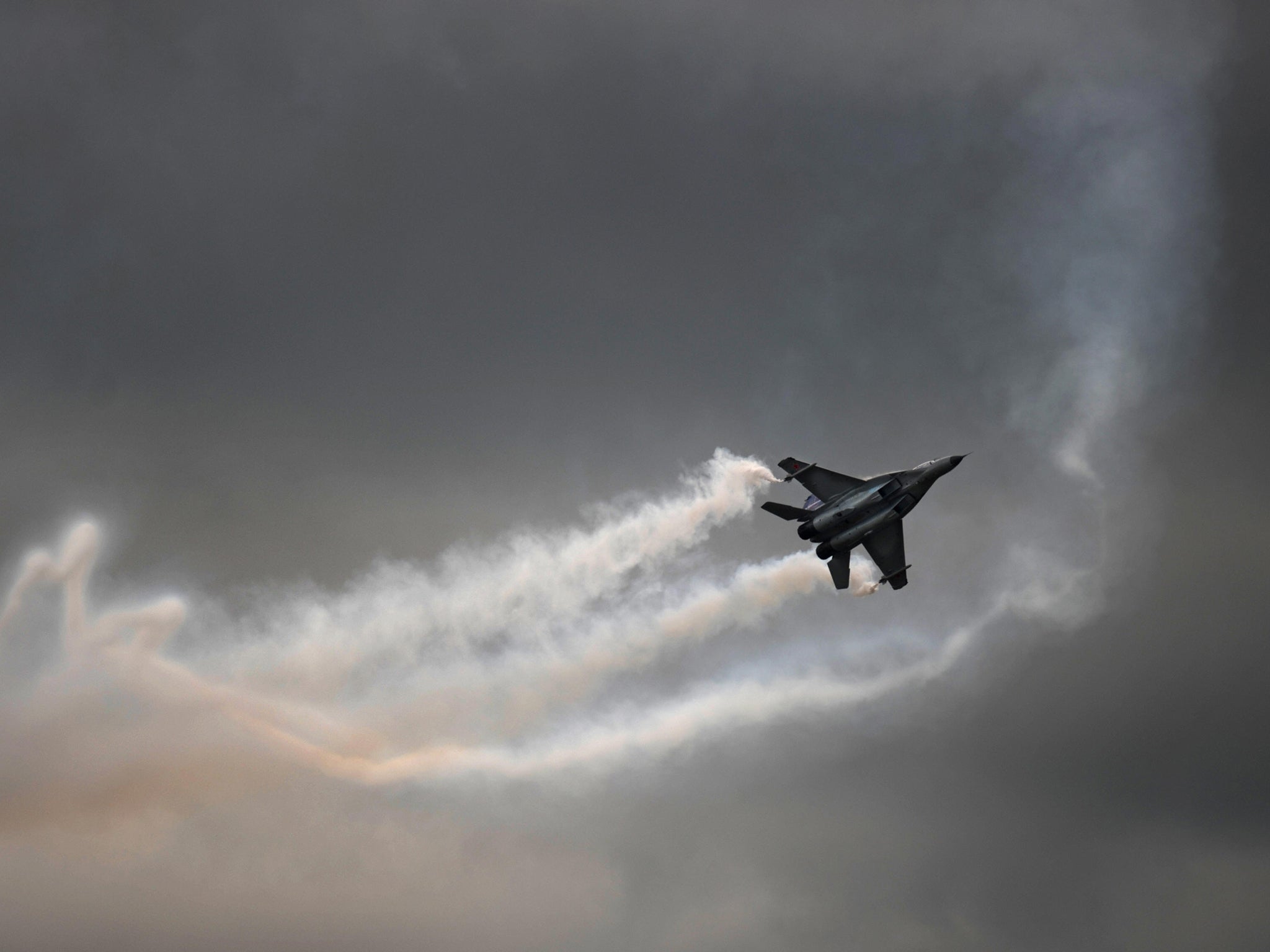
A MiG 21-F in Vietnam People's Air Force markings
It is highly doubtful that Isis has the capability to fly the MiGs it captured during the fight over Taqaba — the planes may not even be airworthy.
Isis has captured plenty of weaponry that it most likely doesn't have the expertise or military infrastructure to operate, including a Russian version of the American Sidewinder missile that was looted from Taqaba and a ballistic missile that it paraded through Raqqa, Syria.
Nevertheless, Isis fighters posed in front of Russian-made MiG-21B fighters after the battle:
Social Media
One of the most effective tools in Isis' arsenal is its social-media savviness. The group routinely churns out slick propaganda videos. It has an English-language outreach magazine, and it puts out tweets hashtagged to trending events to achieve maximum exposure.
Isis is armed for conventional warfare — and has years of experience waging asymmetrical campaigns in both Syria and Iraq. With such an arsenal at the group's disposal, and without a military willing to take it on, Isis rule could become a settled fact of life in the heart of the Middle East.
Read more:
• Women are going to lose out when robots take over
• Oil output fell in December - don't expect prices to rise
• 9 consultancy firms where employees earn the most
Read the original article on Business Insider UK. © 2015. Follow Business Insider UK on Twitter.
Join our commenting forum
Join thought-provoking conversations, follow other Independent readers and see their replies
Comments